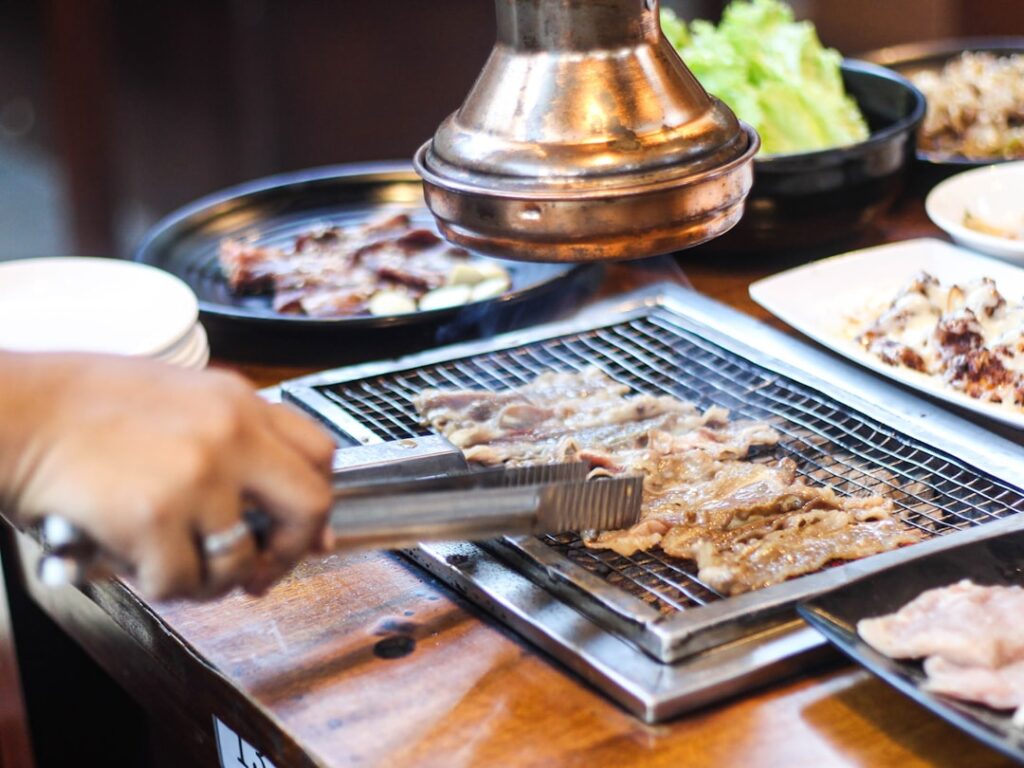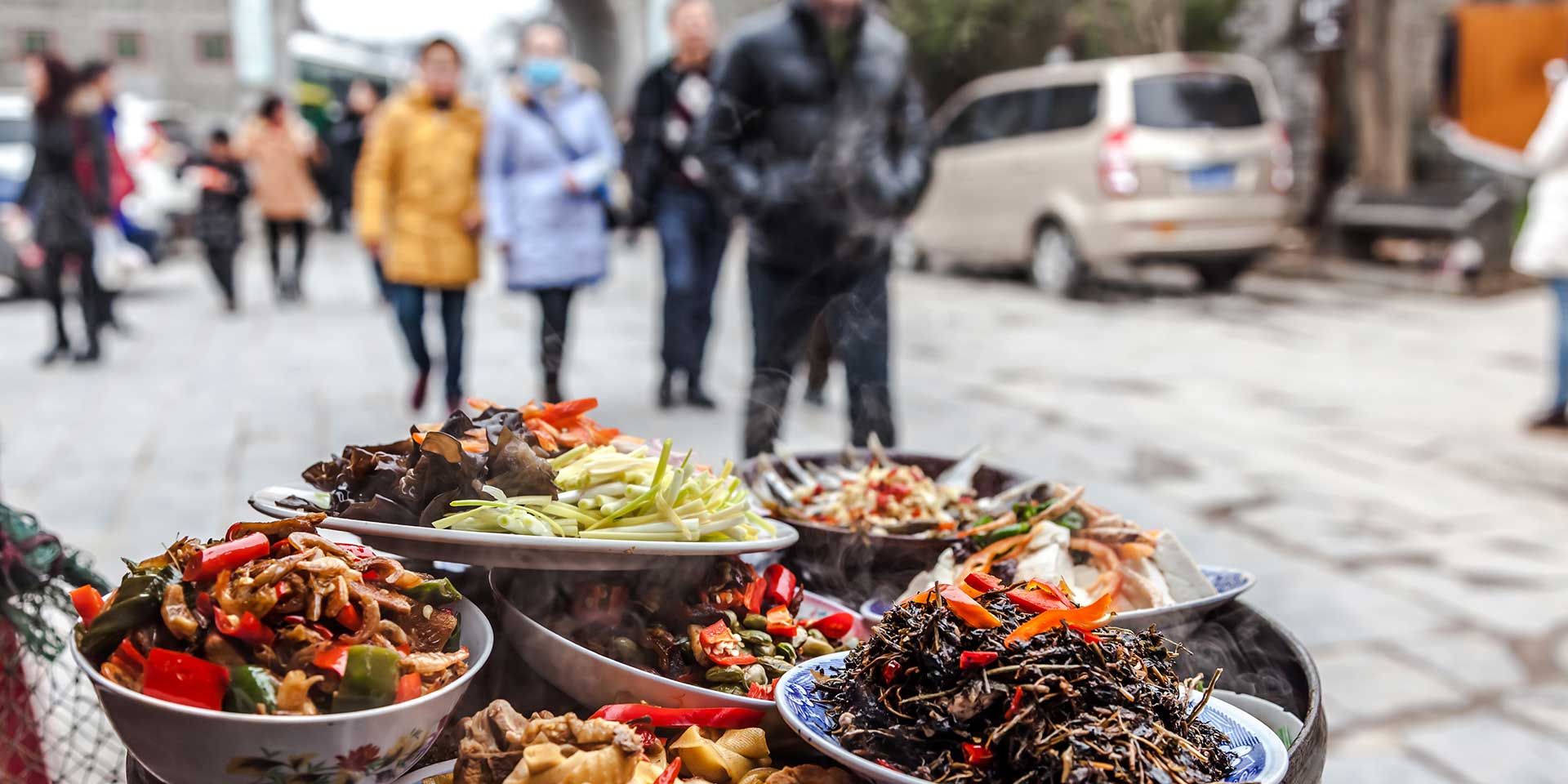What Is Bulgogi? Quick Facts & Why It’s a Global Favorite
If you’re here for a fast answer: bulgogi is a classic Korean dish made of thinly sliced beef (or sometimes pork or chicken) marinated in a sweet, savory, and garlicky sauce, then grilled or seared over high heat. The name literally means “fire meat” (bul = fire, gogi = meat), and it’s famous for its tender texture and crave-worthy flavor.
Bulgogi at a Glance:
- Definition: Korean BBQ featuring thin, marinated slices of meat, usually beef.
- Taste: Sweet, savory, and garlicky, with hints of smoky char.
- Cooking Method: Grilled or quickly pan-seared over high heat.
- Tradition: Served with rice, lettuce wraps (ssam), and plenty of side dishes (banchan).
- Nutritional Info: About 150 kcal per 150g serving. High in protein.
- Cultural Note: Bulgogi dates back nearly 2,000 years to Korea’s Goguryeo era.
“Bulgogi is a Korean-style grilled or roasted dish made of thin, marinated slices of meat, most commonly beef.”
—Encyclopedia of Korean Cuisine
Bulgogi is incredibly popular in Korea and worldwide—found everywhere from street food stalls to upscale restaurants, as well as ready-to-cook kits at the grocery store. Its rich history and approachable flavors have made it a must-try dish for food lovers and adventurous travelers alike.

Quick bulgogi definitions:
What Is Bulgogi? Origins & Etymology
Bulgogi has one of the most captivating food stories we’ve encountered. Picture this: nearly 2,000 years ago, during the Goguryeo era (37 BCE–668 CE), Korean cooks were already perfecting the art of grilling marinated beef over open flames. Back then, they called it maekjeok, and it looked quite different from today’s bulgogi—think skewered chunks of beef rather than those paper-thin slices we know and love.
The dish got a serious upgrade during the Joseon Dynasty, where it transformed into neobiani and became fancy palace food. But here’s where it gets interesting: the bulgogi we know today actually got its name from an unexpected source. When refugees from Pyeongan Province made their way to Seoul, they brought their dialect with them—and that’s how “bulgogi” entered the Korean culinary vocabulary.
It’s amazing to think that this dish didn’t even make it into American English dictionaries until 1961, according to Merriam-Webster. That was just the beginning of bulgogi’s incredible journey from ancient Korean kitchens to dinner tables around the world.
The Meaning Behind “bulgogi”
The beauty of bulgogi starts with its name, and honestly, it couldn’t be more perfect. Break it down: bul (불) means “fire” and gogi (고기) means “meat.” Put them together, and you get “fire meat”—which is exactly what this dish is all about.
When you pronounce it (roughly “BOOL-go-gee”), you can almost hear the sizzle of meat hitting that hot grill. The Pyeongan dialect gave us this wonderfully descriptive name that captures everything essential about the dish: meat, fire, and that magical moment when the two come together.
Historical Milestones of Bulgogi
The story of bulgogi is really the story of Korea itself, evolving through different eras. During the Goguryeo era (37 BCE–668 CE), those early cooks were grilling maekjeok on skewers—primitive but delicious. Fast forward to the Joseon Dynasty (1392–1897), and neobiani had become the sophisticated palace dish that only aristocrats could enjoy.
The 19th century brought us closer to modern bulgogi with the development of that sweet-savory marinade. Then came the 20th century innovation of the Seoul bulgogi pan—those special domed pans with water-filled rims that became iconic in Korean BBQ restaurants.
After bulgogi made its dictionary debut in 1961, the 1980s kicked off what we now call the global K-BBQ boom. Today, you can find bulgogi everywhere from high-end restaurants to your local grocery store’s freezer section.
For more culinary trips like this one, check out our Cookbook: Bulgogi resource, and don’t miss our Street Food Tours for more amazing food stories from around the world.
Essential Ingredients & Marinade Science
What makes bulgogi so incredibly tender and flavorful? The secret lies in understanding the beautiful science behind its marinade. This isn’t just throwing ingredients together—it’s a carefully orchestrated dance of enzymes, acids, and aromatics that transforms tough beef into melt-in-your-mouth perfection.
The foundation starts with soy sauce, your umami powerhouse that penetrates deep into the meat fibers. Brown sugar or honey creates that gorgeous caramelization when the meat hits high heat, while sesame oil adds a nutty richness that’s absolutely essential to authentic bulgogi. Fresh garlic brings aromatic punch, and here’s where things get really interesting.
The real game-changer? Asian pear. This humble fruit contains powerful natural enzymes that literally break down tough meat proteins. These enzymes work fast—sometimes in just 30 minutes—which is why bulgogi marinates so much quicker than other BBQ dishes.
Traditional recipes often include gochujang for those who love heat, or mirin for extra sweetness and depth. If you’re planning to explore more Korean flavors, check out our Street Food Tours guide for insider tips on what to try next.
Key Components of a Classic bulgogi Marinade
Creating authentic bulgogi marinade is all about balance. Think of it as building layers of flavor, where each ingredient has a specific job to do.
Your essential base starts with Korean soy sauce (called jin ganjang) for that authentic taste, though regular soy sauce works fine too. Brown sugar provides the sweetness that caramelizes beautifully, while sesame oil should be added separately for better absorption into the meat.
The tenderizing magic comes from grated Asian pear, sometimes boosted with pureed onion. These fruits contain enzymes that work like natural meat tenderizers, breaking down tough fibers without making the meat mushy.
For aromatics, you’ll want chopped green onions, toasted sesame seeds, and optionally some fresh ginger. The traditional ratio follows a simple 3:1:1 pattern—three parts soy sauce to one part sugar to one part fruit.
Ingredient Swaps for Home Cooks
Don’t panic if your local grocery store doesn’t have a Korean section! We’ve tested plenty of substitutions that still deliver amazing results.
Can’t find Asian pear? Red or Pink Lady apples work beautifully and have similar sweetness and texture. Kiwi fruit is incredibly potent—use just half a kiwi per five pounds of beef, or you’ll end up with mushy meat. Fresh pineapple also works, though canned won’t give you the same tenderizing power.
Here’s our favorite emergency hack: Diet Coke. Yes, really! Two tablespoons per five pounds of beef provides the acidity and sugar needed. It sounds crazy, but the science checks out.
For soy sauce alternatives, Japanese soy sauce works fine with a slightly different flavor profile, or try gluten-free tamari for dietary restrictions. Low-sodium soy sauce is great if you’re watching salt intake—just adjust seasoning to taste.
Choosing & Preparing the Meat
The secret to incredible bulgogi starts long before you fire up the grill—it begins with choosing the right cut of beef. After testing countless combinations in our New York City kitchen, we’ve learned that the perfect bulgogi needs meat with good marbling that can be sliced paper-thin without falling apart.
Ribeye is our top choice every time. The beautiful fat marbling keeps the meat juicy during the quick, high-heat cooking that makes bulgogi so special. Yes, it’s pricier, but the difference in flavor and tenderness is remarkable. Top sirloin comes in as our runner-up—it offers excellent results at a more reasonable price point, making it perfect for weeknight dinners.
If you’re working with a tighter budget, don’t worry! Flank steak and skirt steak can create delicious bulgogi, though they need a bit more love. These leaner cuts require longer marinating times (think 8-12 hours instead of 2-3) and extra attention when slicing against the grain.
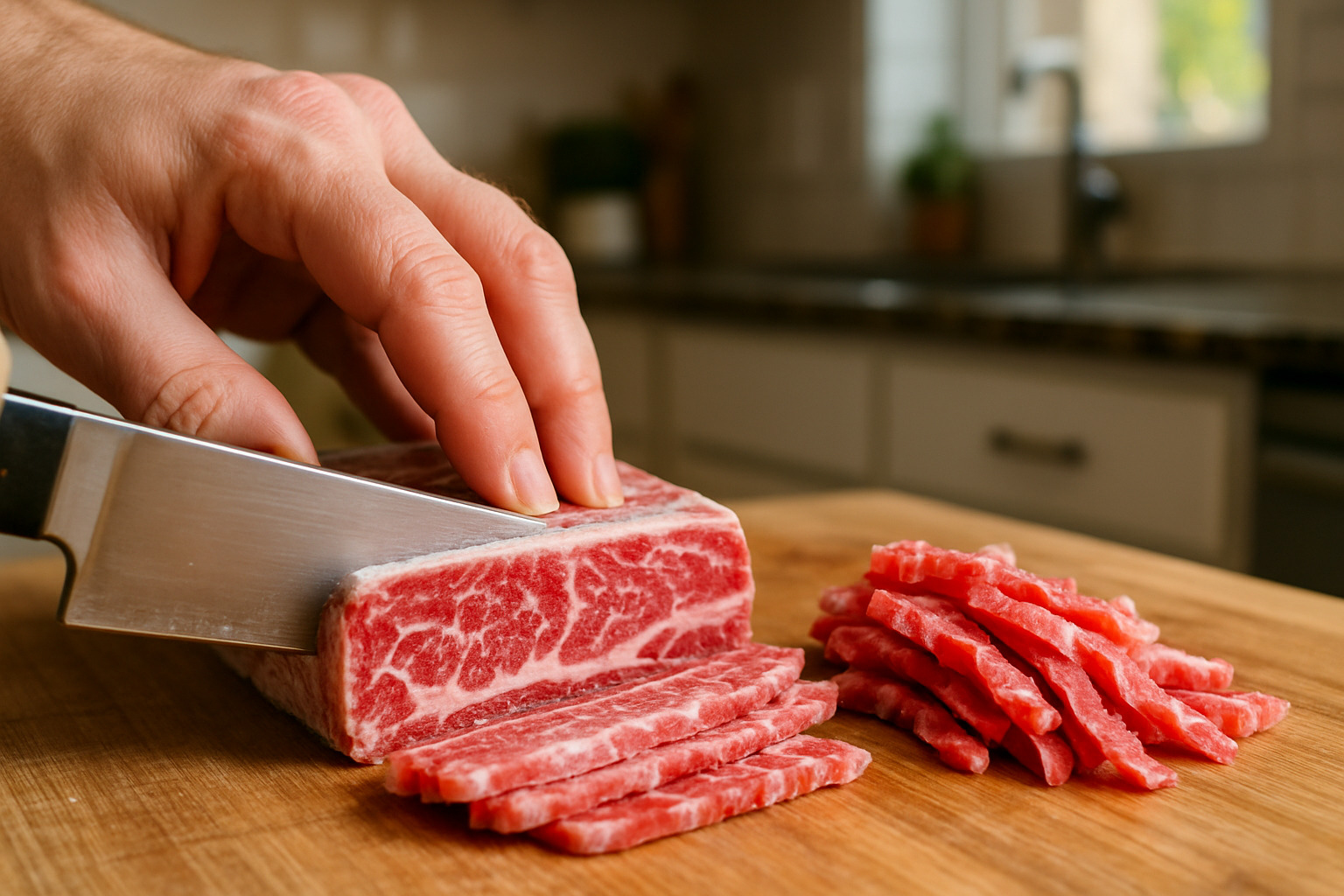
Best Cuts for Authentic bulgogi
When we’re shopping for bulgogi beef, we always head straight to the premium cuts first. Ribeye delivers the richest flavor and stays incredibly juicy thanks to its generous marbling. Top sirloin strikes that sweet spot between quality and cost—it’s what we recommend to friends just starting their bulgogi journey. For special occasions, tenderloin creates the most luxurious experience, though your wallet might feel it.
The budget-friendly options require more technique but can be just as satisfying. Flank steak is lean and flavorful, perfect if you’re planning ahead for longer marinating. Skirt steak brings bold beefy flavor but demands careful slicing. Chuck roast is the ultimate budget choice—it needs overnight marinating but transforms into tender, flavorful bulgogi with patience.
Many Korean markets sell pre-sliced bulgogi beef, and while convenient, we’ve found the quality can be hit-or-miss. Taking the time to slice your own ensures freshness and gives you control over the thickness.
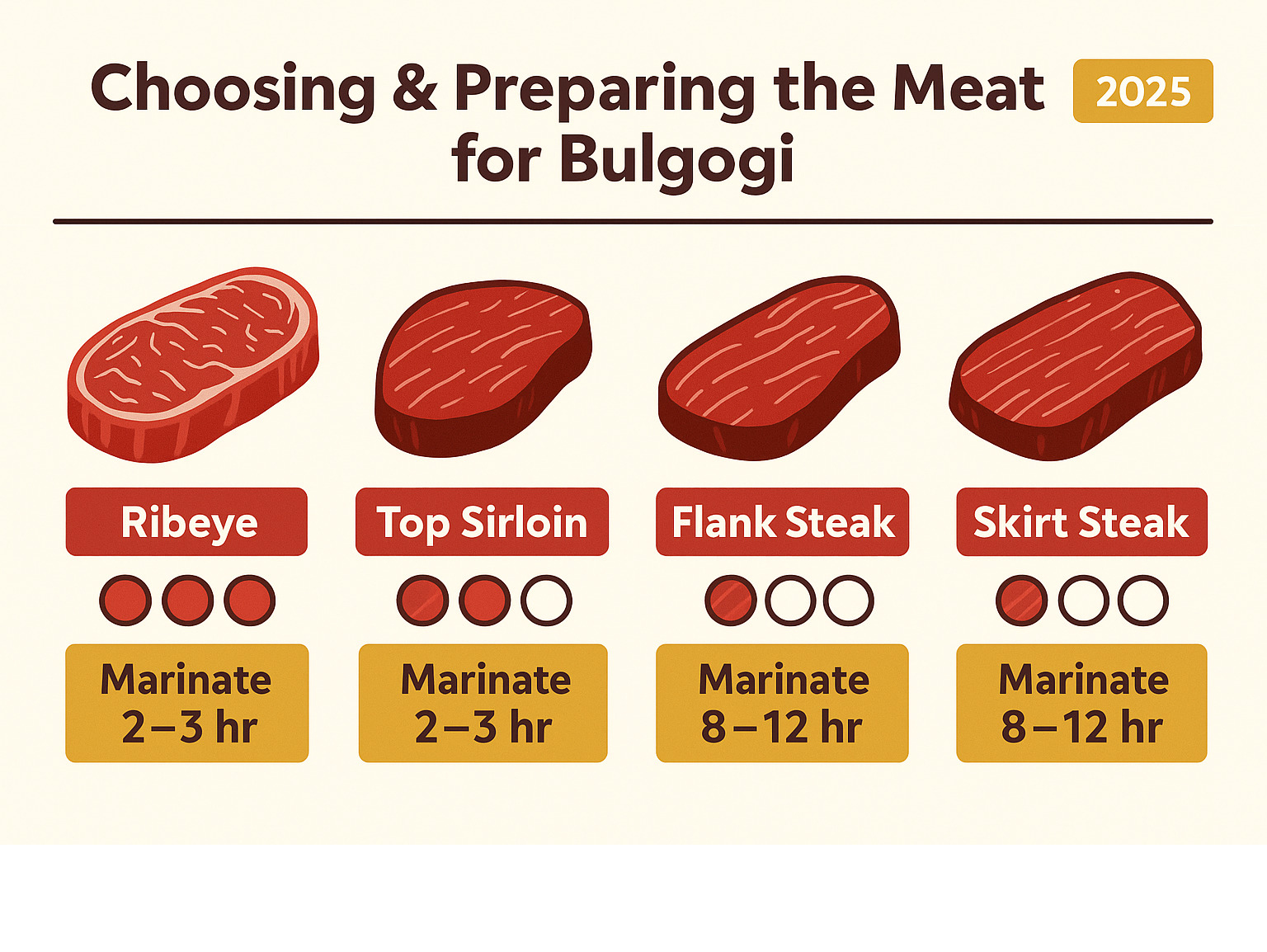
Slicing & Tenderizing Like a Pro
Here’s where the magic happens—and honestly, where most home cooks struggle at first. The key to restaurant-quality bulgogi lies in achieving those impossibly thin slices that cook in minutes and absorb marinade like a sponge.
Our foolproof method starts with the freezer. Wrap your beef and freeze it for about 1.5 hours—you want it firm but not rock-solid. This semi-frozen state makes slicing so much easier and helps you achieve that perfect ⅛-inch thickness that defines authentic bulgogi.
Sharp knife, sharp results—we can’t stress this enough. A dull blade will tear the meat instead of slicing cleanly. Cut perpendicular to the muscle fibers (against the grain), working quickly while the meat is still semi-frozen. Each slice should be thin enough that you can almost see through it.
The timing with fruit enzymes is crucial and varies dramatically. Asian pear gives you a comfortable window of 30 minutes to 4 hours. Kiwi is incredibly powerful—never exceed 2.5 hours or you’ll end up with mushy meat. Apple is more forgiving, working well for up to 6 hours. Without any fruit enzymes, you can safely marinate for up to 24 hours, though the tenderizing effect won’t be as dramatic.
Cooking Methods & Serving Traditions
There’s something magical about gathering around a sizzling grill with family and friends, the aroma of bulgogi filling the air as thin slices of marinated beef caramelized over glowing charcoal. This communal experience lies at the heart of Korean dining culture—it’s not just about the food, but about the connections we make while sharing a meal.
Traditional bulgogi cooking happens on tabletop grills, where everyone participates in the cooking process. The classic method uses a charcoal grill with fine mesh grates to prevent those precious thin meat slices from falling through. But here’s the good news for home cooks: a well-seasoned cast-iron skillet heated until it’s smoking hot can produce equally spectacular results.
The Seoul bulgogi pan is particularly fascinating—it features a distinctive domed cooking surface surrounded by a water-filled rim. This clever design catches the flavorful drippings and transforms them into a rich broth. Some families take this a step further, adding rice and egg to create a comforting porridge called juk from these collected juices.
When it comes to serving, bulgogi arrives as part of a beautiful spread that includes steamed rice, fresh lettuce leaves for wrapping (called ssam), and an array of colorful banchan (side dishes) like kimchi, pickled vegetables, and ssamjang—a spicy-sweet dipping sauce that’s absolutely essential.
The traditional eating method is an art form itself: you wrap the grilled meat, a bit of rice, and sauce in a crisp lettuce leaf, then eat the entire bundle in one bite. Korean etiquette says you must finish the whole wrap without putting it down—which sounds challenging until you taste how perfectly all those flavors work together!
This communal approach to dining perfectly aligns with our philosophy at The Dining Destination—food is about culture, tradition, and bringing people together. For more insights into how different cultures approach shared dining experiences, explore our World Cuisine Exploration guides.
Step-by-Step: Grilling bulgogi at Home
Creating restaurant-quality bulgogi in your own kitchen is absolutely achievable with the right technique. We’ve perfected this method through countless cooking sessions, and it delivers that authentic Korean BBQ experience every time.
Before you start cooking, remove your marinated beef from the refrigerator about 30 minutes early—room temperature meat sears better and cooks more evenly. Get your cast-iron skillet or grill pan screaming hot until it’s actually smoking. Have everything ready to go: your rice should be warm, lettuce leaves washed and dried, and all your banchan arranged beautifully.
High heat is absolutely essential for authentic bulgogi—resist any urge to lower the temperature. Cook in small batches rather than crowding the pan, because overcrowding creates steam instead of that gorgeous caramelized sear we’re after. Each batch should take just 2-3 minutes per side maximum.
Here’s the crucial part: don’t move the meat initially. Let those thin slices develop those characteristic caramelized edges before flipping once. Too much handling prevents proper browning and ruins the texture.
The final touch involves garnishing with sliced green onions and toasted sesame seeds, then serving immediately while everything’s still sizzling. Let your guests assemble their own lettuce wraps—it’s part of the fun and keeps everyone engaged in the meal.
Bulgogi cooks incredibly quickly, so overcooking is the biggest mistake home cooks make. Trust the process and rest the meat briefly before serving.
Common Variations: Pork, Chicken & Beyond
While beef bulgogi gets most of the spotlight, Korean cuisine offers several delicious variations that deserve equal attention. Dwaeji bulgogi (pork bulgogi) uses pork shoulder or belly with a marinade that includes gochujang for heat, creating a spicier and more robust flavor profile that’s incredibly popular at Korean BBQ restaurants.
Dak bulgogi (chicken bulgogi) features boneless chicken thighs marinated with extra ginger and sometimes gochujang. The result is a lighter, more delicate flavor that’s perfect for those avoiding red meat or wanting something less rich.
The modern fusion movement has acceptd bulgogi in creative ways that might surprise you. Bulgogi tacos represent the beautiful Korean-Mexican fusion happening in kitchens worldwide, while bulgogi burgers topped with kimchi have become Instagram sensations. In Korea itself, you’ll find bulgogi pizza (which is surprisingly popular) and bulgogi spring rolls on many restaurant menus.
Plant-based versions using marinated tofu or mushrooms prove that the fundamental bulgogi marinade principles work with almost any protein. These adaptations show how a traditional dish can evolve while maintaining its essential character.
Tofu bulgogi has gained particular popularity among vegetarians, as the marinade penetrates the tofu beautifully, creating umami-rich flavors that satisfy even dedicated meat-eaters. The key is using extra-firm tofu and pressing out excess moisture before marinating.
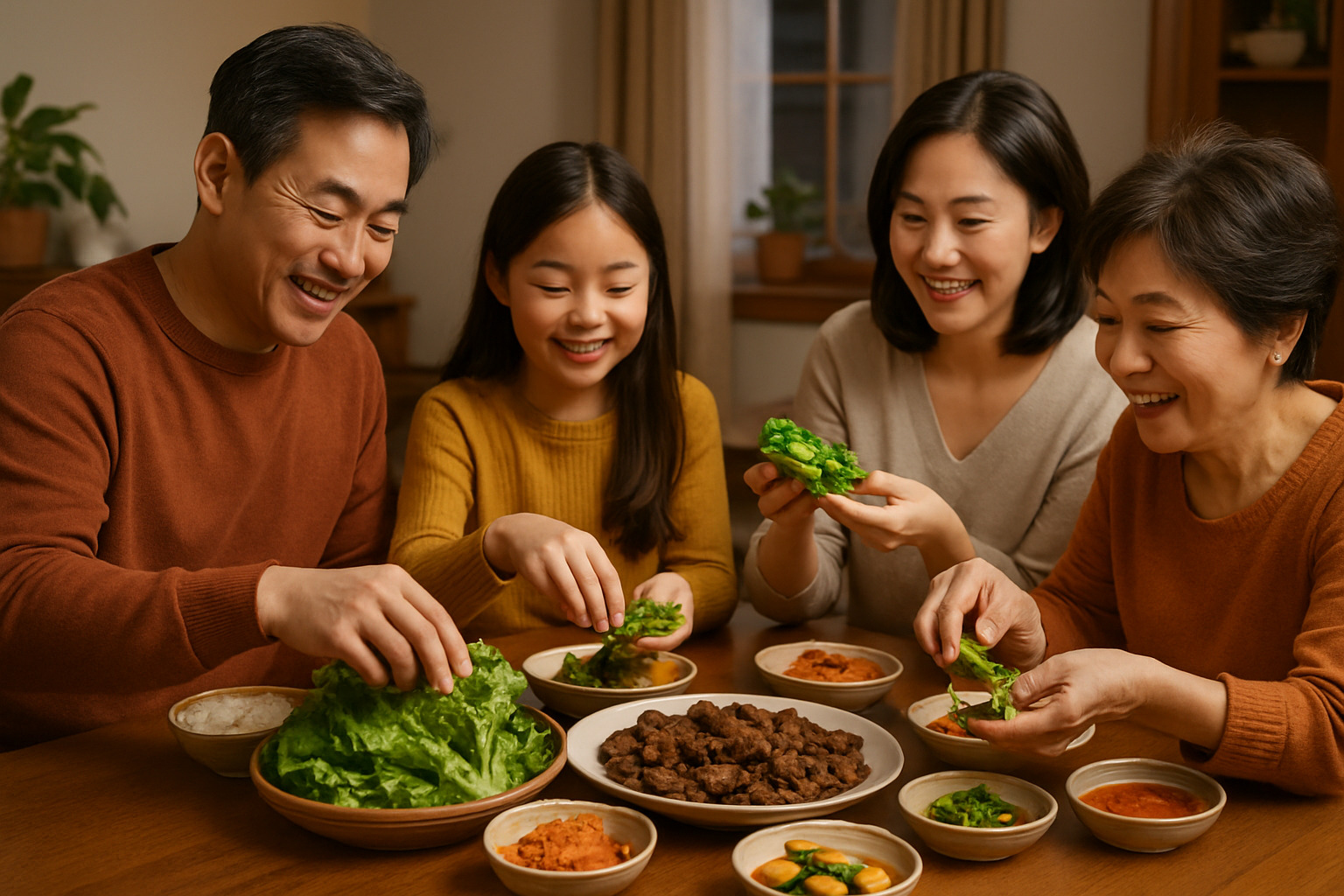
Nutrition, Tips & Common Mistakes
Bulgogi is not only delicious—it’s surprisingly nutritious too. A typical 150g serving packs about 150 calories and an impressive 25g of protein, making it an excellent choice for anyone looking to maintain muscle while enjoying incredible flavors. The macronutrient profile is well-balanced, with healthy fats from sesame oil and natural sugars from the marinade.
The main nutritional consideration is sodium content. Thanks to the soy sauce marinade, a cup serving contains about 1,143mg of sodium—that’s roughly half your daily recommended intake. If you’re watching your salt intake, simply swap in low-sodium soy sauce or tamari.
What we love about bulgogi is how it naturally fits into a healthy eating pattern. When served with traditional banchan like kimchi and pickled vegetables, you’re adding probiotics and extra vitamins to your meal.
For meal prep enthusiasts, bulgogi is a game-changer. The marinated meat freezes beautifully for up to three months, and cooked bulgogi stays fresh in the fridge for five days.
Pro Hacks for Perfect bulgogi Every Time
After years of testing bulgogi recipes in our New York City kitchen, we’ve finded some insider tricks that make all the difference. The biggest game-changer? Add sesame oil separately after marinating, not during. This prevents the oil from creating a barrier that blocks flavor absorption.
Here’s something most home cooks don’t know: reserve some of your marinade before adding the raw meat. Simmer this clean marinade with a touch of cornstarch to create an incredible sauce for drizzling over rice.
When it comes to cooking, cast-iron is your best friend if you don’t have a grill. Heat that skillet until it’s smoking hot—don’t be afraid of the heat. The high temperature creates those beautiful caramelized edges that make restaurant bulgogi so irresistible.
One mistake we see constantly: overcrowding the pan. Cook your bulgogi in small batches, even if it takes longer. Overcrowding creates steam instead of that gorgeous sear you’re after.
Timing matters with fruit enzymes. Asian pear and apple can marinate for hours, but kiwi will turn your meat to mush if left too long. Stick to 2.5 hours maximum with kiwi, and your bulgogi will be perfectly tender, not mushy.
Nutrition Snapshot
Let’s break down what you’re getting in a typical bulgogi serving. Per 150g serving, you’re looking at 150 calories and 25g of protein—that’s nearly half the protein most people need in a day. The 21g of fat comes mainly from the beef’s natural marbling and heart-healthy sesame oil.
The 12g of carbohydrates come from the marinade’s brown sugar and fruit, which caramelize beautifully during cooking. For low-carb enthusiasts, skip the rice and wrap your bulgogi in crisp lettuce leaves instead.
Sodium sits at 1,143mg (50% of daily value), which sounds high but remember—this includes all the flavor-packed marinade. Using low-sodium soy sauce can cut this significantly without sacrificing taste.
The iron content is impressive at 2.5mg (14% daily value), plus you’re getting potassium and calcium. When you add traditional banchan to your meal, you’re creating a nutritionally complete and satisfying dinner.
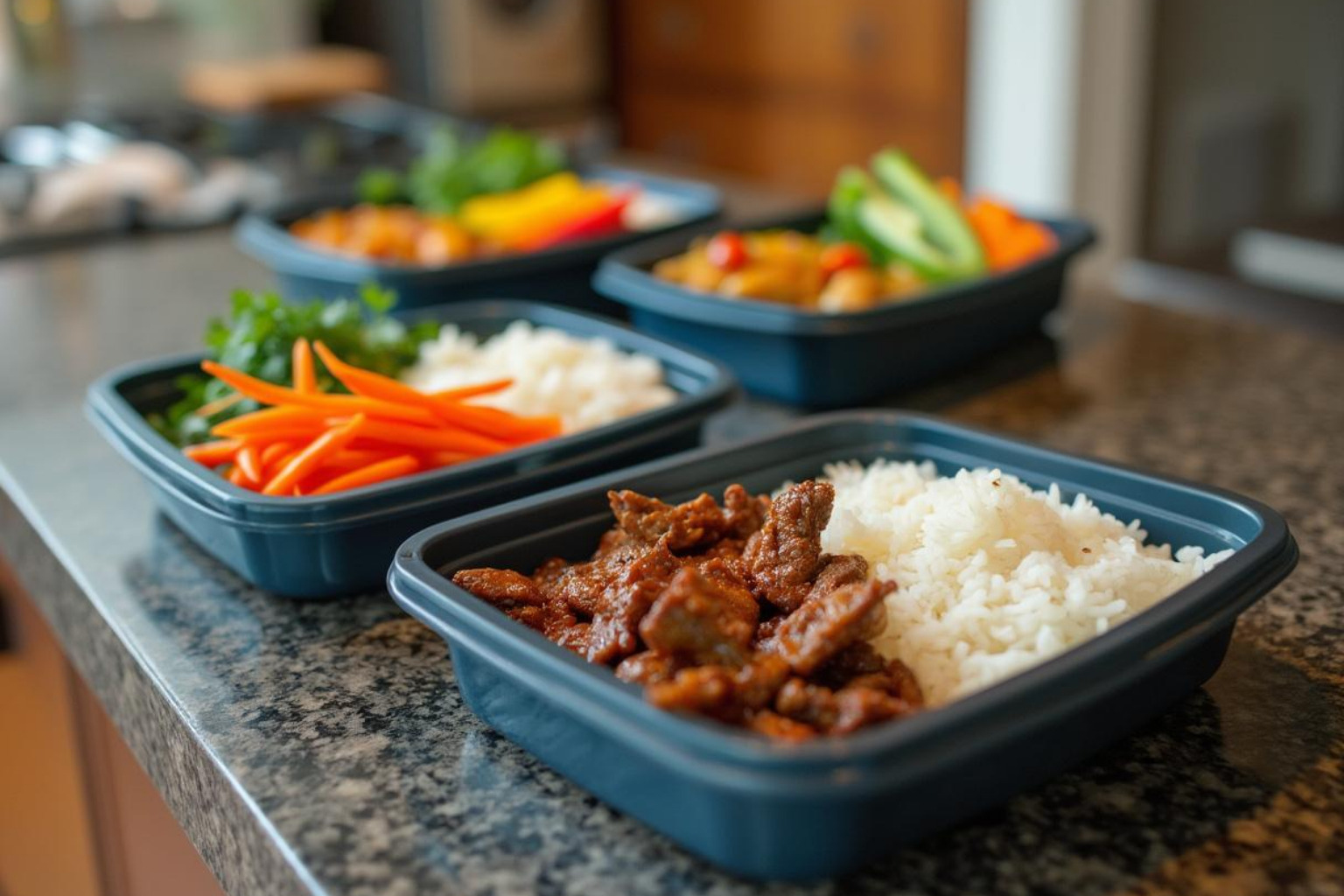
Frequently Asked Questions about Bulgogi
When we’re exploring Korean cuisine during our culinary trips, these are the three questions that come up most often about bulgogi. Let’s explore the answers that will help you master this incredible “fire meat” dish.
What does bulgogi literally mean?
Bulgogi has one of the most descriptive names in Korean cuisine—it literally means “fire meat.” The word breaks down beautifully: bul (불) means “fire” and gogi (고기) means “meat.” When you put them together, you get a name that perfectly captures what happens when marinated beef meets blazing heat.
This name isn’t just poetic—it tells the whole story of how bulgogi should be cooked. The “fire” part refers to the traditional method of grilling over open flames or extremely high heat, which creates those gorgeous caramelized edges and smoky flavors we all crave. The term originally came from the Pyeongan dialect and has been used for centuries to describe this beloved cooking technique.
It’s fascinating how a simple two-word combination can capture the essence of an entire culinary tradition, don’t you think?
How long should I marinate bulgogi?
Timing your bulgogi marinade is crucial—too little time and you miss out on flavor, too much time and you risk turning your beef into mush. The sweet spot depends entirely on what cut of meat you’re using and which tenderizing ingredients are in your marinade.
For tender cuts like ribeye or sirloin, 30 minutes to 4 hours gives you perfect results. These premium cuts don’t need much help, so the marinade works quickly to infuse flavor without over-tenderizing. If you’re working with tougher cuts like flank steak, plan for 8 to 12 hours of marinating time to break down those muscle fibers properly.
Here’s where it gets interesting—the fruit in your marinade completely changes the timing game. Asian pear is gentle and forgiving, working perfectly within that 30-minute to 4-hour window. Kiwi fruit is incredibly powerful, so never go beyond 2.5 hours or you’ll end up with mushy meat. Apple falls somewhere in the middle, staying safe up to 6 hours.
If you’re making bulgogi without any fruit enzymes, you can safely marinate for up to 24 hours. Just remember—when those natural enzymes are working, less is definitely more.
Can I make bulgogi without Asian pear?
Absolutely! While Asian pear is traditional in authentic bulgogi recipes, we completely understand that not everyone has access to Korean grocery stores. The good news is that several common fruits work beautifully as substitutes.
Red apples are your best bet—varieties like Pink Lady or Gala offer similar sweetness and texture to Asian pear. We’ve tested this swap extensively, and the results are nearly identical to the original. Kiwi fruit is incredibly effective as a tenderizer, but use it sparingly. Just half a kiwi per 5 pounds of beef will do the trick, thanks to its super-strong enzymes.
Fresh pineapple works wonderfully too, though avoid the canned version since the enzymes have been destroyed during processing. In a real pinch, we’ve even seen home cooks use Diet Coke—about 2 tablespoons per 5 pounds of beef. It sounds crazy, but the acidity and sugar content actually help tenderize the meat and balance the soy sauce.
The key is understanding that you need something both acidic and sweet to replicate what Asian pear does naturally. Any of these substitutes will help you create delicious bulgogi that honors the traditional flavors while working with ingredients you can easily find.
Conclusion
Bulgogi—this ancient “fire meat”—captures everything we love about finding incredible dishes from around the world. From its fascinating origins as maekjeot skewers in the Goguryeo era to becoming a global Korean BBQ sensation, bulgogi shows us how exceptional food brings cultures together across centuries.
What makes bulgogi truly magical isn’t just its perfect harmony of sweet, savory, and smoky flavors. It’s not even the impressive nutrition—150 kcal per serving with a whopping 36g of protein. The real magic happens when families gather around sizzling tabletop grills, wrapping tender meat in fresh lettuce leaves, sharing banchan and creating memories together.
We’ve taken you through the complete bulgogi journey—from understanding the science behind fruit-enzyme marinades to mastering the art of slicing semi-frozen beef paper-thin. Whether you’re splurging on premium ribeye or working with budget-friendly flank steak, our techniques will help you create restaurant-quality results in your own kitchen. Just remember the golden rules: high heat, thin slices, and never overcrowd that pan.
The beauty of bulgogi lies in how it welcomes experimentation. Start with the classic beef version, then venture into spicy pork bulgogi territory, or get creative with fusion ideas like bulgogi tacos. Each variation tells its own delicious story while honoring the dish’s rich heritage.
Ready to find more amazing dining experiences? Explore our Unique Dining Spots to find Korean BBQ gems that go beyond the ordinary. At The Dining Destination, we’re passionate about connecting food lovers from New York City to kitchens worldwide, sharing the stories, techniques, and traditions that make every great dish special.
Now grab that cast-iron skillet, slice some beef thin, and create your own bulgogi masterpiece. Trust us—your taste buds and dinner guests will be talking about it for weeks.

